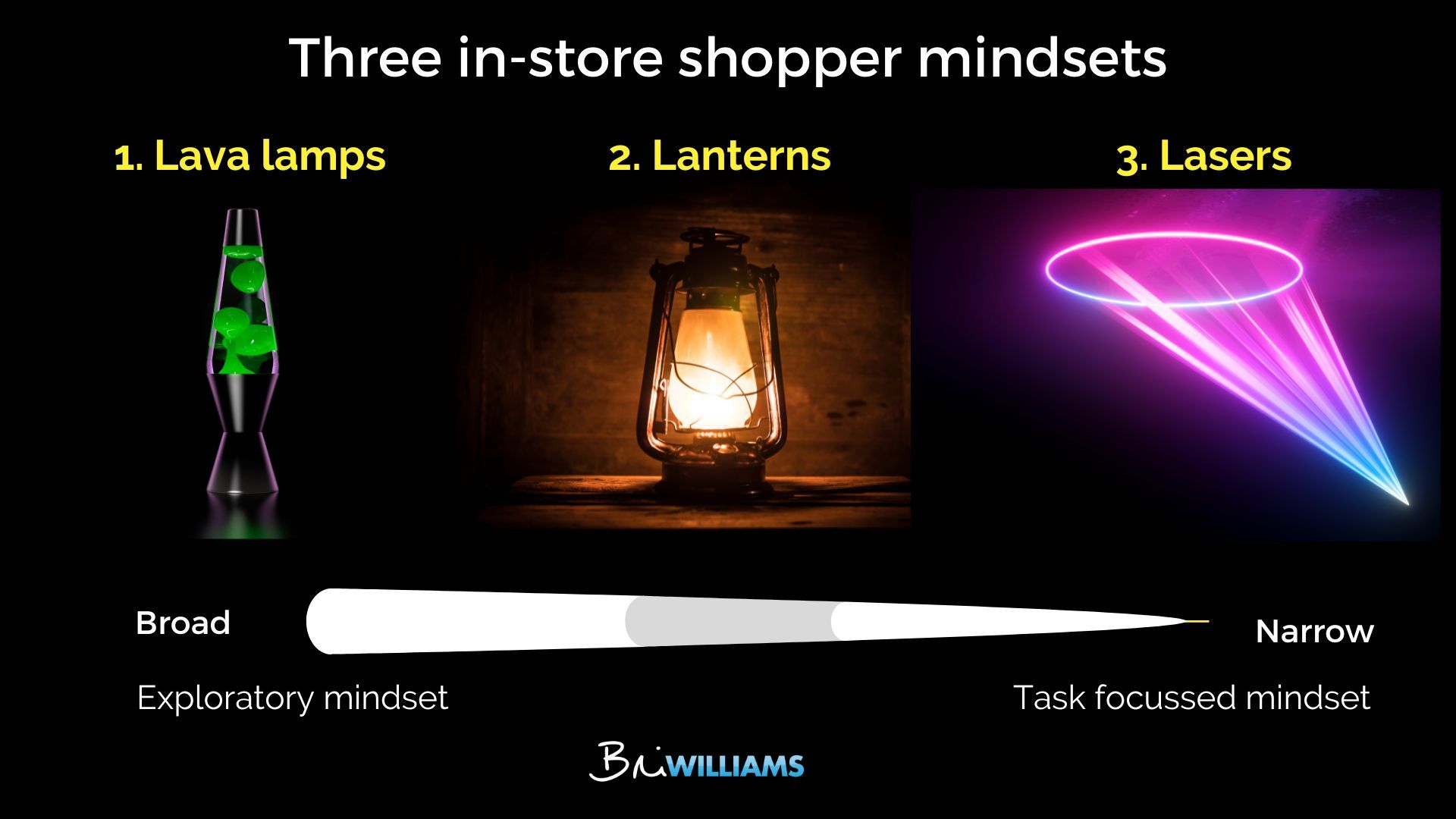3 shopper mindsets

I’m preparing for a keynote to a retail group in a couple of weeks, so I’ve been thinking about how they can better engage with in-store shoppers.
As I see it, there are three shopper mindsets that vary according to task orientation:
- Lasers,
- Lanterns and
- Lava Lamps.
I’m using light as the metaphor to represent how diffused their focus is.
At one end of the task orientation scale, Lasers are laser focussed on what they need to buy. They want to get in and get out, so don’t get in...
How to cross-sell using completion bias
What does a jigsaw puzzle have to do with selling?
Researchers successfully used visual representations of a jigsaw to sell more wine and more banking products.
We can encourage customers to buy more products across our range by changing the way we visually represent them.
In this video I explain:
- How to visually represent your product suite
- What completion bias is and why it's so powerful
- How an online retailer and bank used these techniques to drive sales
How to get a customer to proceed
Customer not interested in proceeding?
When persuading customers, your work is less about moving them TOWARDS something, and more about getting them to MOVE AWAY from something else.
To get someone to buy, for example, we need to move them away from not having the product at all or using a competitor’s.
That means not only talking up the benefits of our product - but planting the seed that they’ll be worse off if they don’t proceed. That they’ll be going backwards!
For example, “Sounds...
How to get customers to buy more of your range
If you’d like to get customers to buy more from you, here’s an idea.
Make use of the Completeness Bias - our desire to complete something once we’ve started.
Like a jigsaw puzzle, for example.
An Italian vineyard was able to sell more across its range by matching wines to 5 stages of a dinner party.
But the best bit?
They represented these stages as a jigsaw puzzle that needed to be completed.
This DOUBLED their sales. Instead of 4 out of every 10 customers buying multiple products, 8 ...
6 cognitive biases that get people to buy online

6 cognitive biases that influence online shopping
Google's consumer insights team wanted to "understand how consumers make decisions in an online environment of abundant choice and limitless information."
They found that "people deal with scale and complexity by using cognitive biases encoded deep in their psychology."
As consumers cycle through exploration and evaluation phases of their decision, they rely on the following six cognitive biases:
- Category heuristics - Short descriptions of prod ...

